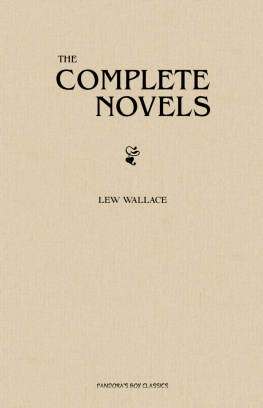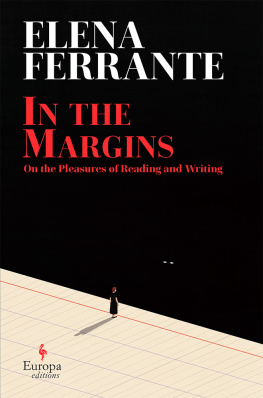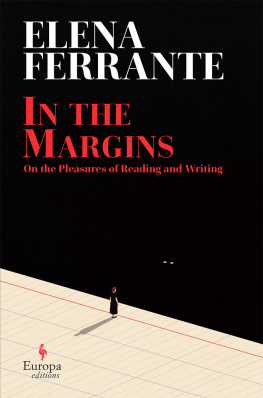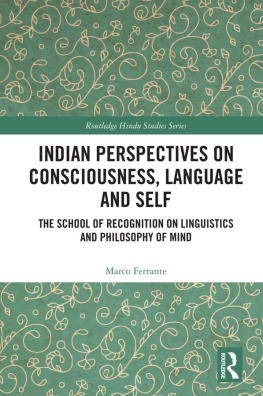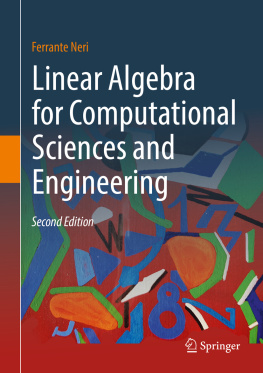University of California Press, one of the most distinguished university presses in the United States, enriches lives around the world by advancing scholarship in the humanities, social sciences, and natural sciences. Its activities are supported by the UC Press Foundation and by philanthropic contributions from individuals and institutions. For more information, visit www.ucpress.edu.
University of California Press
Oakland, California
2018 by The Regents of the University of California
Library of Congress Cataloging-in-Publication Data
Names: Ferrante-Wallace, Joan, 1955- author.
Title: Places that matter : knowing your neighborhood through data / Joan Ferrante.
Description: Oakland, California : University of California Press, [2018] | Includes bibliographical references and index. |
Identifiers: LCCN 2017057349 (print) | LCCN 2017058980 (ebook) | ISBN 9780520965928 (ebook) | ISBN 9780520292369 (cloth : alk. paper) | ISBN 9780520292352 (pbk : alk. paper)
Subjects: LCSH : CommunitiesResearchMethodology.
Classification: LCC HM 756 (ebook) | LCC HM 756 . F 47 2018 (print) | DDC 307.072dc23
LC record available at https://lccn.loc.gov/2017057349
27 26 25 24 23 22 21 20 19 18
10 9 8 7 6 5 4 3 2 1
Preface
Places That Matter: Knowing Your Neighborhood through Data is for anyone who wants to learn the basic language of qualitative and quantitative research methods and translate that language into action. Engaging with these methods for the first time is especially eye-opening when you try them out in familiar spaces, like a neighborhood. Research methods will turn the familiar into something new so that even places you know well can take on a touch of the unknown when you arrive there from a different direction (Milford 2012, 2).
Doing research is always an adventure because it begins with the experience of chaosof confronting the complexities of the world and the people in it. So the challenge becomes, where do I begin? what do I want to know? how do I ask questions that will guide my efforts? It is the process of working through the chaos that moves us onto the path of discovery.
To do meaningful research requires many decisions, including retractions. When I ask those doing research about what it is like for them, most reply that it is challenging in many ways. When I press them to elaborate, the challenges named include the following:
the ton of little details they must know to do research
becoming overwhelmed by so many decisions
the brain shutting down when it comes to this kind of work
investing so much concentration and other mental energy
thinking in such a disciplined way
the time and dedication it takes to become just adequate
learning the language of research methods, which can seem like a foreign language
its messiness: the constant need to think and rethink
not understanding how each part of the research process adds up to reveal the big picture
Places that Matter is written with the goal of easing the many challenges that come with doing research by (1) applying the methods to a place that matters to your everyday life; (2) converting the abstract language of research into action; and (3) coaching you through the process of doing research.
THE PLACES THAT MATTER
This book uses a place that matters to your life as a vehicle to introduce the methods of research. That place can be the house where you grew up or now live, a caf where homework is done, a park, a place of worship, a grandparents house, or a spot to meet friends. Whatever the choice, the place that matters serves as an emotional anchor that attaches you to the project and to its larger educational and applied purposes. Those purposes are to reveal the power of research methods and the importance of the neighborhood that surrounds your place that matters. Mattering gives purpose to the mental effort and discipline required to internalize the research concepts and move forward. The work of negotiating difficult material is eased when there is an emotional connection to the task at hand.
BUILDING CONFIDENCE
You will engage in experiences that reveal how the methods of research can help you answer questions about the neighborhood that surrounds, or hugs, the place that matters. This book eases you into the concepts and processes by tying them to questions that need to be answered: What does place that matters mean? How do I define the surrounding neighborhood? How will the sociological lens help me see things in this neighborhood that I might never have noticed? How do I collect data and make other kinds of observations to help me learn about the neighborhood needs and draw up a plan of personal action? How do I know if the neighborhood is unusual or typical?
COACHING
Places That Matter coaches you through the process of finding answers to the kinds of questions posed above and using those answers to take an action. That plan addresses the extent to which you currently support (or fail to support) the neighborhood that surrounds the place that matters. That plan also addresses ways to increase or sustain that support. The work you do for each chapter builds toward a finalized plan you may one day decide to implement (see chapter 8).
This book is not a comprehensive overview of research methods. Rather, it seeks to build a solid conceptual and experiential foundation for wanting to learn more. It adopts an action-based learning (ABL), or learner-centered, approach to research. At least four criteria distinguish ABL.
(1) At the center of ABL are overarching questions to guide activities.
ABL projects must be carefully crafted. A carefully crafted project requires you to engage with key questions that ultimately direct your energies in the service of an important intellectual purpose (Blumenfeld et al. 1991, In fact, the key questions are the most critical ingredients of the project as they also evoke interest and convey the projects essence. For the Places that Matter project, there are two key questions:
1. In what ways do you currently support, or fail to support, the neighborhood that surrounds the place that matters ?
2. Should that support be increased? If so, in what ways?
(2) Learners are invested in the project.
ABL learners have many opportunities to make decisions and take responsibility. There are opportunities to engage with the sociological literature on places, neighborhoods, residents, and households; do investigative research; share experiences and insights; offer and accept feedback; and find ways to share lessons learned with audiences beyond the classroom.
(3) Investigative methods are central.
Potential investigative methods include interviews, surveys, observation, document analysis, conversation, and content analysis. The method that is chosen must deliver the kinds of facts that best support thoughtful and honest answers to the key questions. In other words, the method is chosen with the aim of gathering the best evidence that can be used to build a credible and compelling answer.








